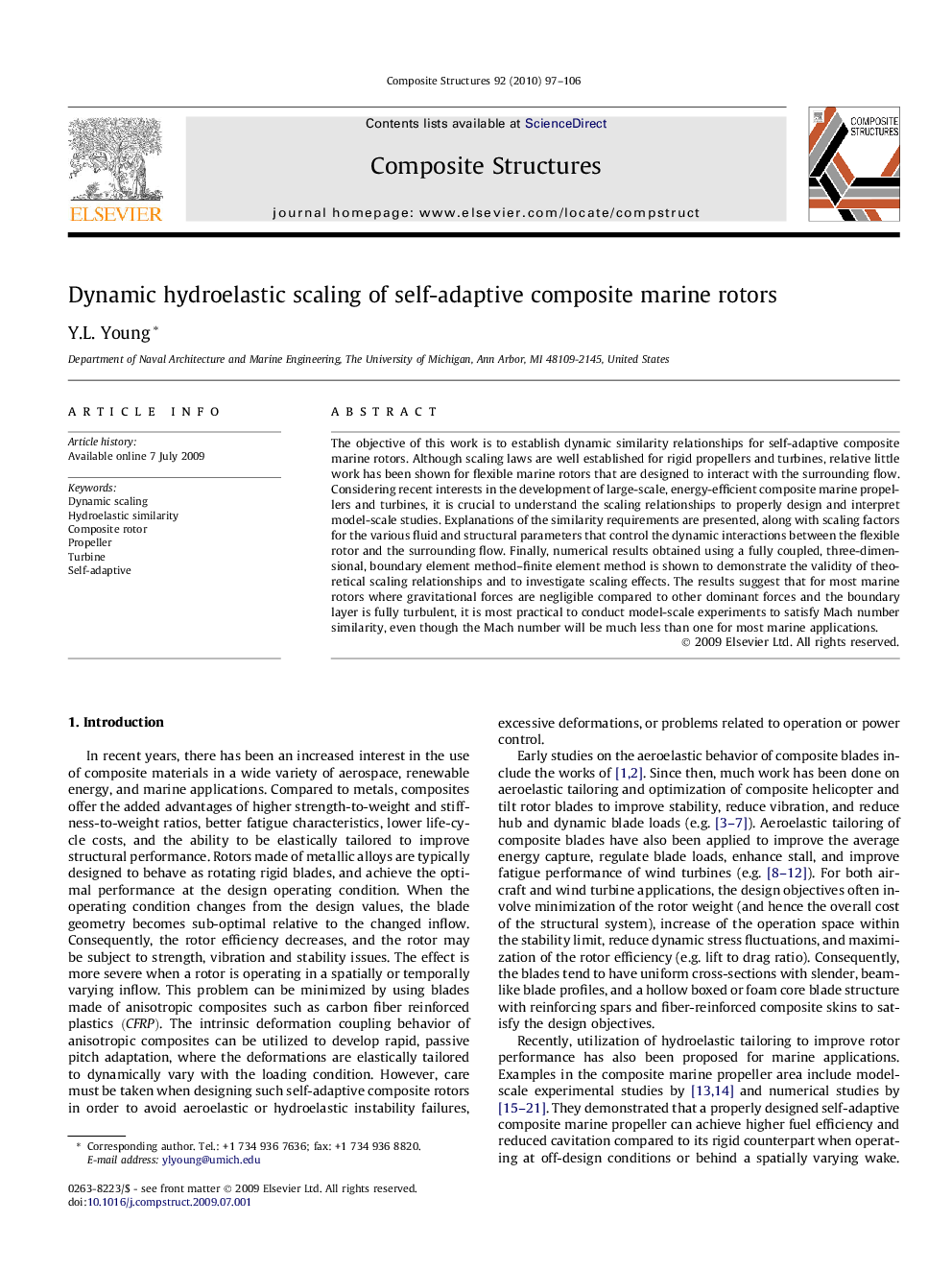| کد مقاله | کد نشریه | سال انتشار | مقاله انگلیسی | نسخه تمام متن |
|---|---|---|---|---|
| 253761 | 503023 | 2010 | 10 صفحه PDF | دانلود رایگان |

The objective of this work is to establish dynamic similarity relationships for self-adaptive composite marine rotors. Although scaling laws are well established for rigid propellers and turbines, relative little work has been shown for flexible marine rotors that are designed to interact with the surrounding flow. Considering recent interests in the development of large-scale, energy-efficient composite marine propellers and turbines, it is crucial to understand the scaling relationships to properly design and interpret model-scale studies. Explanations of the similarity requirements are presented, along with scaling factors for the various fluid and structural parameters that control the dynamic interactions between the flexible rotor and the surrounding flow. Finally, numerical results obtained using a fully coupled, three-dimensional, boundary element method–finite element method is shown to demonstrate the validity of theoretical scaling relationships and to investigate scaling effects. The results suggest that for most marine rotors where gravitational forces are negligible compared to other dominant forces and the boundary layer is fully turbulent, it is most practical to conduct model-scale experiments to satisfy Mach number similarity, even though the Mach number will be much less than one for most marine applications.
Journal: Composite Structures - Volume 92, Issue 1, January 2010, Pages 97–106